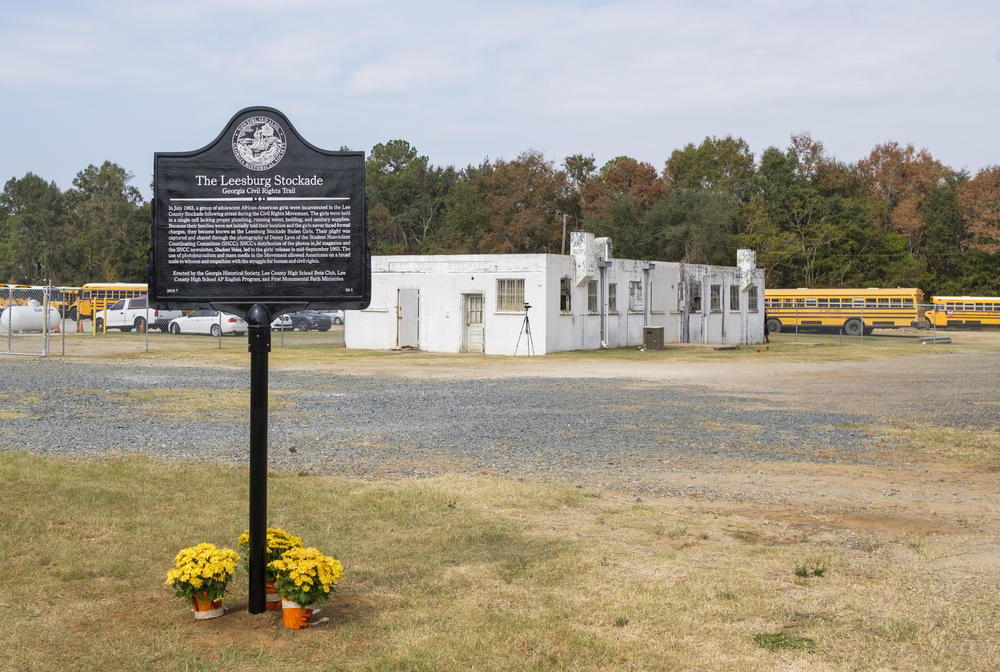Section Branding
Header Content
New Historical Marker For Girls Illegally Jailed During Civil Rights Era
Primary Content
Until recently, you could have probably ridden by the Leesburg Stockade in southwest Georgia without noticing it or having any clue about the civil rights history to which the squat, block building bore witness.
A new historical marker at the site has changed some of that. It has also led to a debate about just how many young girls were jailed there in the summer of 1963.
Some of the girls were already veterans of the mass meetings and organzing in and around Sumter County in the early 1960s.
"In that time in the city it was a very violent civil rights movement," Shirley Reese said in GPB's short documentary on the episode from 2016. Reese went on to be an educator and a member of the Americus City Council.
"We were protesting as children," Reese said.
What the children were protesting on the day of their arrest was the blacks only section of the downtown Americus movie theater. It's a bank today. Emmarene Kaigler-Streeter, one of the other young women jailed in Leesburg and a retired educator, said the police came not long after they bought their tickets. The girls were put in the back of trucks.
"Then they herded us like cattle," Kaigler-Streeter said.
Rumors of the girls' detention reached the Student Nonviolent Coordinating Committee in Atlanta. SNCC dispatched documentary photographer Danny Lyon, barely out of his teen years, to Leesburg to investigate.
The handful of images Lyon made in secret through the bars of the jail eventually made their way to President Kennedy. After months in the stockade, the young women were freed.
Today, the 15 girls in Lyon's photo are considered The Leeasburg Girls. But historical documents suggest that during the summer of 1963, hundreds of people in southwest Georgia were likely illegally jailed, in Leesburg and elsewhere, for their Civil Rights Activism. That in turn poses questions about the scope and reach of the Leesburg story.
Lorena Barnum Sabbs was jailed in Leesburg but isn't one of the official 15.
"I was 11 years old. I was just a kid. I didn't know, I didn't understand the full volume," Sabbs said. "But my own brother had been in prison for three months in Dawson."
Sabbs said the fact there were other young people caught up by law enforcement means the Leesburg episode is only one example of much more widespread injustice in Georgia in the 1960s.
"This is not unique. It's just iconic because of the documentation we had," Sabbs said.
The historical marker is part of the state marker program and the Civil Rights Trail. It was also made possible through the work of the Georgia Historical Society, Lee County High School Beta Club, Lee County High School AP English Program and First Monumental Faith Ministries.



